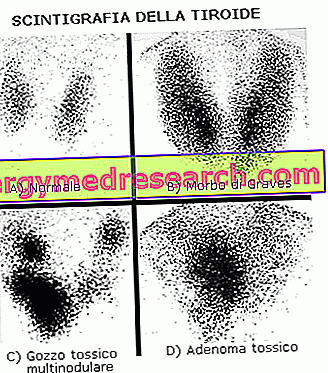What is that
Chemical peeling is a dermo-aesthetic treatment used to counteract and eliminate various types of imperfections; moreover, in certain cases, it can also be useful in the treatment of different skin diseases.

Performing a chemical peel basically means practicing a chemical exfoliation of the skin, thus favoring cell turnover. In order to perform this exfoliation, specific substances are used: chemical exfoliants.
Depending on the type of blemish / disorder to be treated, chemical peels can be performed both within beauty centers and on an outpatient basis by medical personnel. Naturally, the chemical peeling performed in beauty centers is less deep than that performed at a dermatological level; therefore, it can be used only for the treatment of more superficial imperfections.
Indications
What is Chemical Peeling used for?
As mentioned, the chemical peel can be used for the treatment of various imperfections and skin diseases, such as:
- Wrinkles;
- Skin stains;
- Freckles;
- Acne scars;
- Stretch marks;
- keratosis;
- Melasma;
- Psoriasis;
- warts;
- Acne;
- Rosacea;
- Seborrheic dermatitis.
Classification
Classification and Types of Chemical Peeling
Chemical peels can be classified according to the depth at which they are performed. In this regard, we can distinguish:
Very superficial peeling
It is a chemical peel that exfoliates the most superficial and external layer of the skin, whose use is indicated above all to reduce the skin opacity. A very superficial chemical peeling therefore has a limited action on the horny layer of the epidermis.
Superficial peeling
It is a chemical peel that acts in a slightly deeper way, reaching up to the basal layer of the epidermis, at the level of which it creates a necrosis. It is particularly suitable for scarring, hyperpigmentation and superficial wrinkles.
Medium peeling
It is a chemical peeling that has a medium depth action and acts on the epidermis and papillary dermis, where it creates necrosis and inflammation. Its use is indicated for the treatment of acne and varicella scars, papulo-pustular acne, melasma and wrinkles of medium depth.
Deep peeling
It is a chemical peel that reaches the deepest layers of the skin, reaching the reticular dermis, where it creates necrosis and inflammation. Its use is particularly indicated in case of wrinkles and particularly deep scars.
The depth at which the peeling is performed depends essentially on three factors: the type of imperfection or disorder that must be treated, the type of chemical exfoliant used and the concentration at which it is found.
Normally, the chemical peel performed inside the beauty centers is very superficial. The deeper peels, on the other hand, must be performed by specialized medical personnel, since they require the use of particularly aggressive chemical exfoliants and / or high concentrations.
Chemical exfoliants
Types of Chemical Exfoliants and Their Characteristics
For more information, read: Exfoliants and Chemical Exfoliants
There are many chemical exfoliators currently available that can be used to perform a chemical peel. Some will be briefly described below.
Alpha-hydroxy acids
Alpha-hydroxy acids - or fruit acids - are the most well-known chemical exfoliants. Among these, we recall:
- Glycolic acid : with a good exfoliating action, which can be more or less deep depending on the concentration used. It is indicated for the treatment of acne, psoriasis, skin spots, wrinkles and stretch marks.
- Mandelic acid : with an extremely delicate exfoliating action, it can also be used on the most sensitive skin. It is especially indicated for the treatment of acne and superficial wrinkles.
Salicylic acid
Salicylic acid is the main exponent of the beta-hydroxy acids category. Its use is particularly useful in cases of mild to moderate pustular acne.
Retinoic acid
Retinoic acid is the acid form of vitamin A. It is able to perform a good exfoliating action and is particularly indicated in the treatment of hyperpigmentation, also of a post-inflammatory nature. It can only be used in dermatology.
Trichloroacetic acid (TCA)
It is a particularly aggressive chemical exfoliant that is used only and exclusively in the dermatological field for the treatment of warts, deep scars, melasma, keratoses and very deep wrinkles.
How it is performed
How to perform Chemical Peeling
In order to avoid the occurrence of any undesirable effects, the chemical peel should be performed only by expert personnel.
The treatment consists in applying one or more chemical exfoliants mixed together, generally using a soft bristle brush on the skin - dry and clean.
Once the product has been applied to the areas concerned, it is necessary to respect a laying time that varies according to the type of exfoliant used, its concentration and the imperfection that one wants to treat.
After the exposure time, the chemical exfoliant (or the mixture of exfoliants, depending on the case) is removed and the skin is thoroughly cleaned. Finally, it is possible to apply moisturizing products or specific products to increase - as far as possible - the effect obtained with the peeling. For example, if the peeling was performed to eliminate wrinkles, at the end of the treatment it may be useful to apply a mask or an anti-wrinkle cream. In fact, the application of active substances after such a treatment greatly increases their absorption, and therefore their effectiveness.
Please note
Both before and after the execution of the chemical peel, in order to avoid complications and unwanted effects, it is necessary to avoid exposure to UV rays, be they natural or artificial.
How it works
How Chemical Peeling Works
As mentioned, with the execution of the chemical peel the natural processes of exfoliation of the skin are accelerated and the cellular turnover is stimulated. The chemical exfoliants used to perform chemical peeling, in fact, are able to break the bonds that hold the corneocytes together and to induce necrosis and inflammation in the more or less deep layers of the skin (epidermis, papillary and reticular dermis) .
Thanks to this mechanism of action, with chemical peeling it is possible:
- Eliminate altered and damaged epidermis and dermis cells;
- Promote cell turnover, thus promoting skin renewal;
- Stimulate the synthesis of new collagen and new elastic fibers by dermal fibroblasts;
- Promote the absorption of any active ingredients applied at the end of the treatment (moisturizers, emollients, anti-wrinkles, etc.).
Side effects
Unwanted Effects and Complications of Chemical Peeling
The side effects that may occur following the execution of a chemical peel vary depending on:
- of the depth to which the peeling was performed,
- of the type of chemical exfoliant used,
- of the patient's sensitivity to treatment.
However, among the main side effects that can occur, we recall:
- Redness;
- Burning;
- Irritation.
The appearance of the aforementioned undesirable effects is to be considered normal and, usually, these are mild and tend to self-purify in a short time.
Furthermore, the possibility of the onset of allergic reactions in sensitive individuals cannot be excluded.
Among the most important complications, instead, we find infections and the appearance of scars. However, if the chemical peel is performed correctly and by specialized medical personnel, the onset of similar complications is an extremely rare event.



